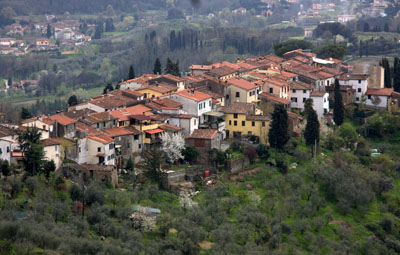Tuscan villages: San Gennaro
The village of San Gennaro is a settlement on the ridge of the boundary with the valley of Pescia di Collodi and, according to martyrologies of just after the time of San Frediano (A. Mazzarosa, 1933) in dates back to the 6th century. Its foundation was perhaps due to a Neapolitan community that had emigrated here after the huge eruption of Vesuvius in 512, a hypotesis which is also borne out by the fact that there was a street in the village called Gragnano and another near Naples.
The ancient village of San Gennaro has a particular town layout which “pivots” around the parish church and above which the town layout consists of a series of villas standing next to each other and connected by enclosure walls, parks and family oratories. Called “Il Castello”, this is the oldest part of village and the richiest of history, and from here there is a splendid view of the lucca plain.
The village below the church is composed of about one hundred buildings built in series and all with similar characters (the size of the buildings is determined by the lenght of the wooden beams), with living quarters on the upper florr and shops on the ground floor.
the majority of the houses probably date back the the 16th century, but on many of them the date chiselled into the portal is 1746, the year in which the reorganisation of the town and buildings took place, which also led to the removal of the outside stairs.
Although the Municipality of san gennaro had been established and had its own statue since the 12th century, the village did not have a place where meeting could be held and they took place in the parish church.
It was for this reason that in 16000 a town hall was built in the area below the church.
Next to the church is the Boccella building, an architectural complex that is now being restored for use as Museum of Oil and Wine, with a wine shop and tasting room, a meeting room and areas especially equipped for top quality tourist accomodation. This is also where the head office of the Fondazione Palazzo Boccella will be situated and the entire complex will be run by a consortium of public bodies and private producers and entrepreneurs.

0 Comments